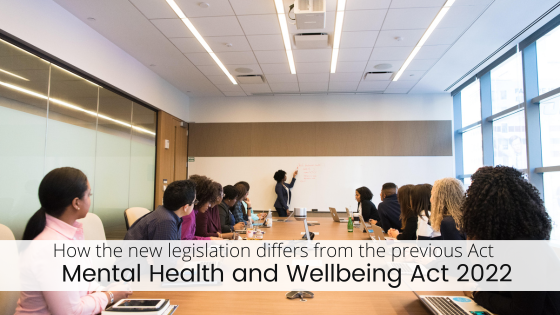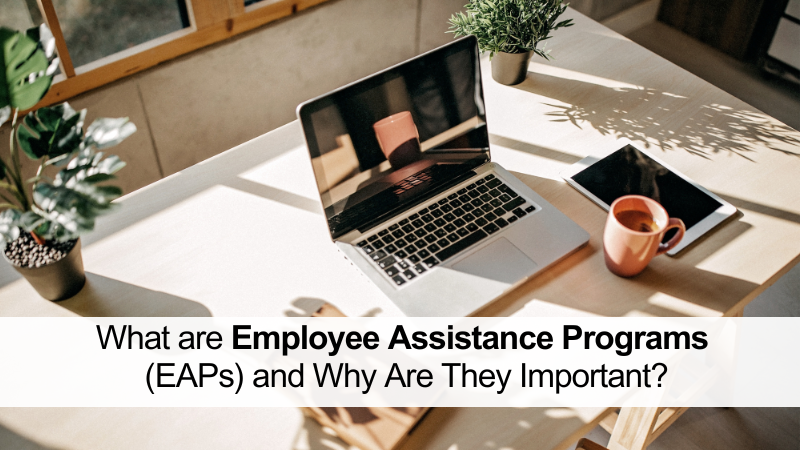The Mental Health and Wellbeing Act 2022 differs from the Mental Health Act 2014 in several key ways, for instance, it introduces new mental health entities and roles, and it has a more holistic approach to mental wellbeing. Here are some of the key ways this new legislation differs from the old.
Creation of new entities
- The Mental Health and Wellbeing Commission is a statutory body that will replace the Mental Health Complaints Commissioner on 1 September 2023. It will continue to handle mental health related complaints but will also be responsible for quality and safety standards within Victoria’s mental health system.
- The Mental Health Workforce Safety and Wellbeing Committee is a new entity that focuses on the safety and well-being of the mental health workforce. Its roles include identifying, monitoring, and addressing both physical and psychological risks for staff, creating tailored approaches for their psychological health and safety, and making recommendations to the Minister for Health on ways to enhance workforce safety and well-being.
- The Chief Officer for Mental Health and Wellbeing will lead the implementation of the Mental Health and Wellbeing Act 2022, overseeing mental health policies, monitoring quality and safety, and working towards an equitable mental health system.
- Regional Mental Health Boards are responsible for planning and coordinating mental health services in specific regions, including developing mental health plans, working with local communities, and monitoring the quality and safety of services.
- Youth Mental Health and Wellbeing Victoria (YMHWV) is a new statutory body that focuses on improving the mental well-being of young people, providing funding, raising awareness, and advocating for the rights of young people with mental illness.
- The Mental Health and Wellbeing Advisory Council provides advice to the Minister for Health, monitoring the performance of the mental health system and advocating for the rights of people with mental illness.
- The Act also recognises the essential contributions to these entities of individuals with personal experience in mental illness.
The existing roles of Chief Psychiatrist and the Mental Health Tribunal have been broadened and refined.

Provision of legislated funding
- The Mental Health and Wellbeing Research and Innovation Fund supports research and innovation, including developing new treatments, improving service quality, and reducing stigma.
- The Mental Health and Wellbeing Quality and Safety Fund supports the improvement of quality and safety in the mental health system, developing standards, and promoting a culture of safety.
Greater emphasis on cultural safety and other rights
- The Act emphasises the need for culturally safe services for Aboriginal and Torres Strait Islander peoples.
- The legislation focuses on upholding mental health standards and reduces compulsory treatments, with employers being held accountable.
- The Act keeps compulsory assessment and treatment criteria but introduces new principles and regulations, including shorter community treatment orders and regulation of chemical restraint.
A focus on individual support
- The new legislation supports autonomy and improved communication and decision-making for those with mental illness.
- Expanded advance statements and an opt-out model of mental health advocacy are introduced.
Expanded recognition and information sharing
- A broader range of mental health and wellbeing service providers are now acknowledged under The Act
- The Act still governs information sharing but has updated rules around sharing information, considering emergency situations and potential risks like family violence. The legislation also lays foundations for a health-centred approach to mental health emergencies.
More new terrain: the Occupational Health and Safety Amendment (Psychological Health) Regulations
The new act isn’t the only piece of new mental health legislation. The Victorian government is in the process of creating a set of Occupational Health and Safety (Psychological Health) Regulations (The Regulations). These regulations will be a set of regulations made under the Occupational Health and Safety Act 2004. The Regulations aim to prevent psychological harm in the workplace by requiring employers to identify and assess the risks of psychological harm and to take steps to control those risks.
The Regulations define psychological harm as “any psychological reaction to work-related factors that results in an adverse effect on the person’s physical or mental health”. This includes a wide range of conditions, such as stress, anxiety, depression, and post-traumatic stress disorder.
The Regulations are an important step towards protecting the mental health of workers. By complying with the Regulations, you can create a workplace that is safe and supportive for all employees.
Also Read : Promote Prosocial Behaviour and you Improve Inclusivity
AUTHOR Michelle Robertson (Trudgen), Clinical Director, ACT Curious.
CONTACT US 📞 0438 922 979 (Australia Wide) email: hello@actcurious.com
DISCLAIMER The content of this blog is not intended to be a substitute for professional medical advice, diagnosis, or treatment.
COPYRIGHT © ACT Curious Pty Ltd, 2023.






